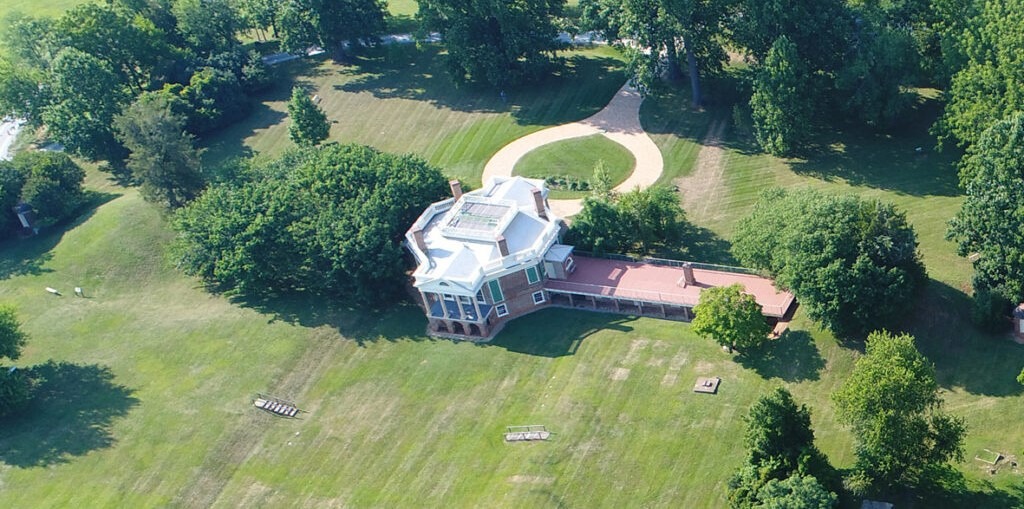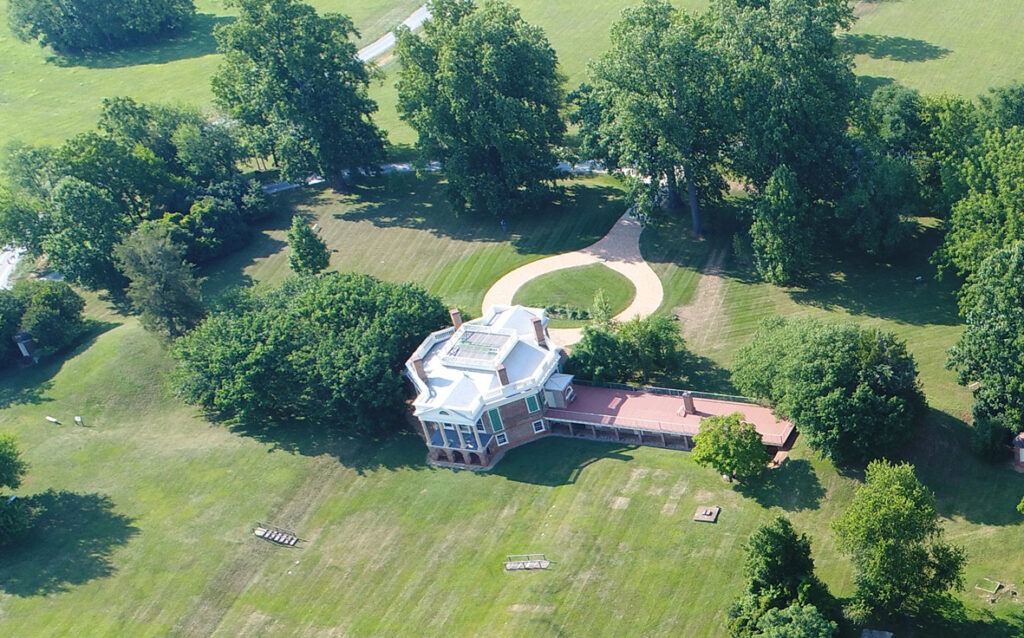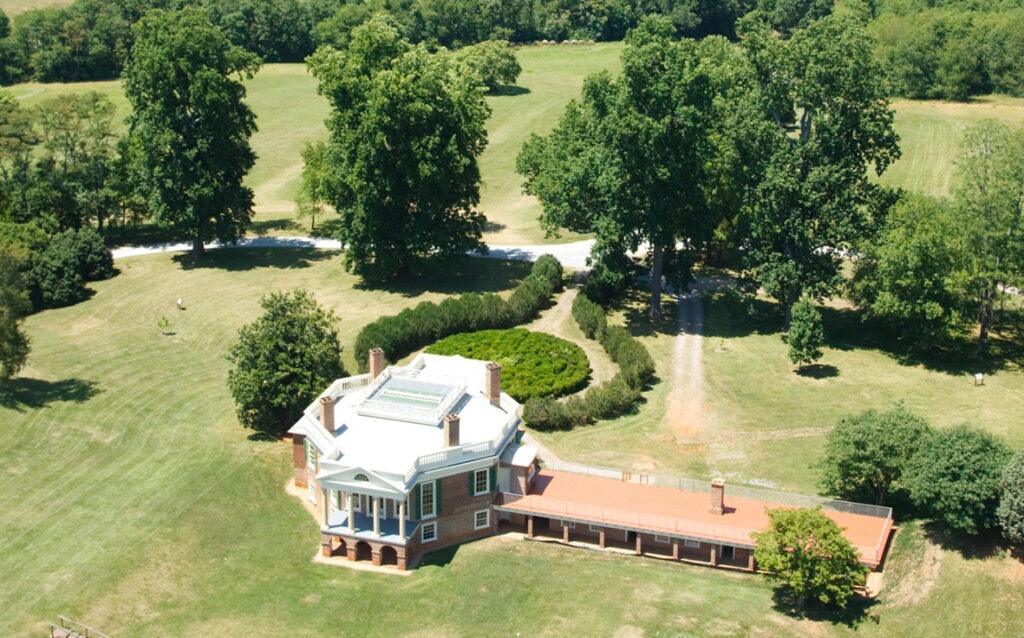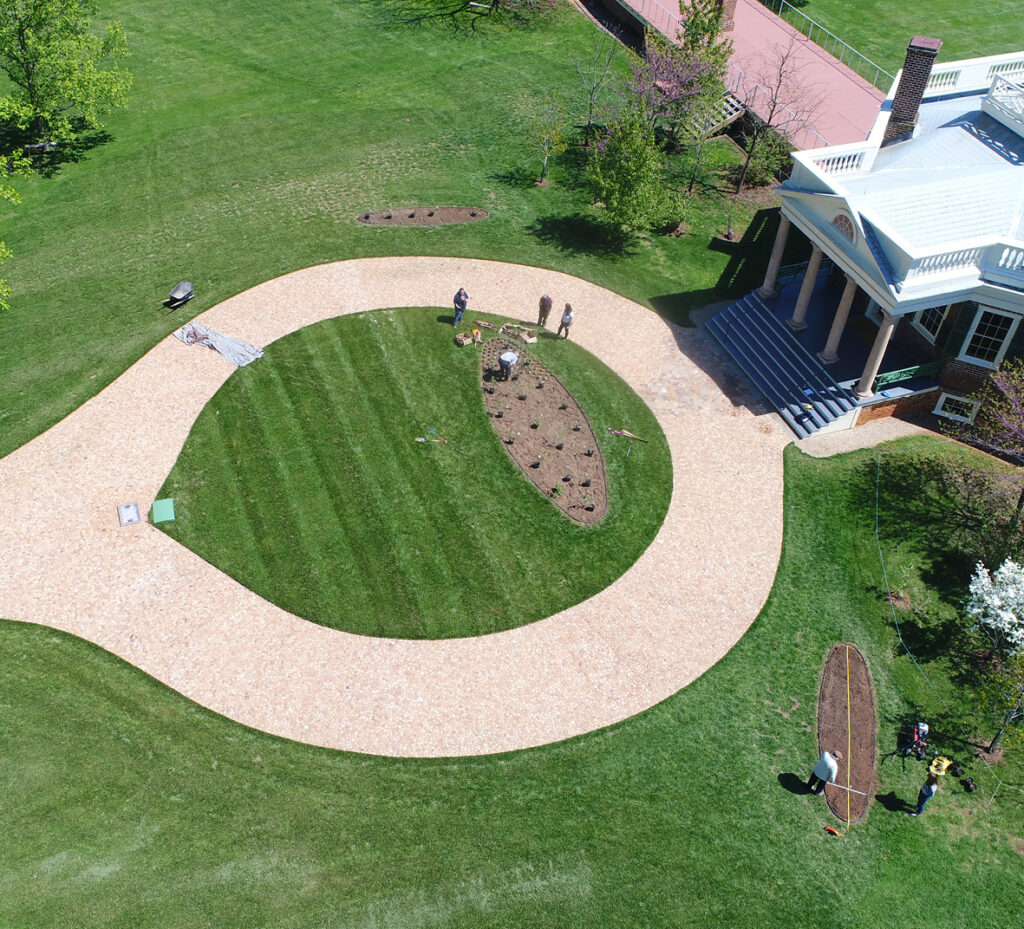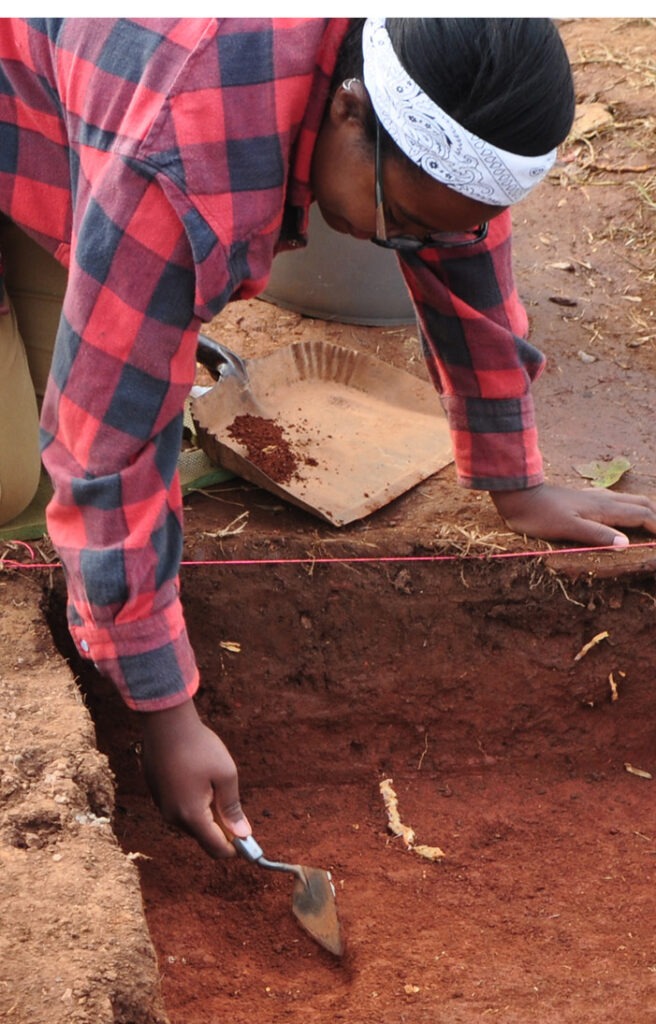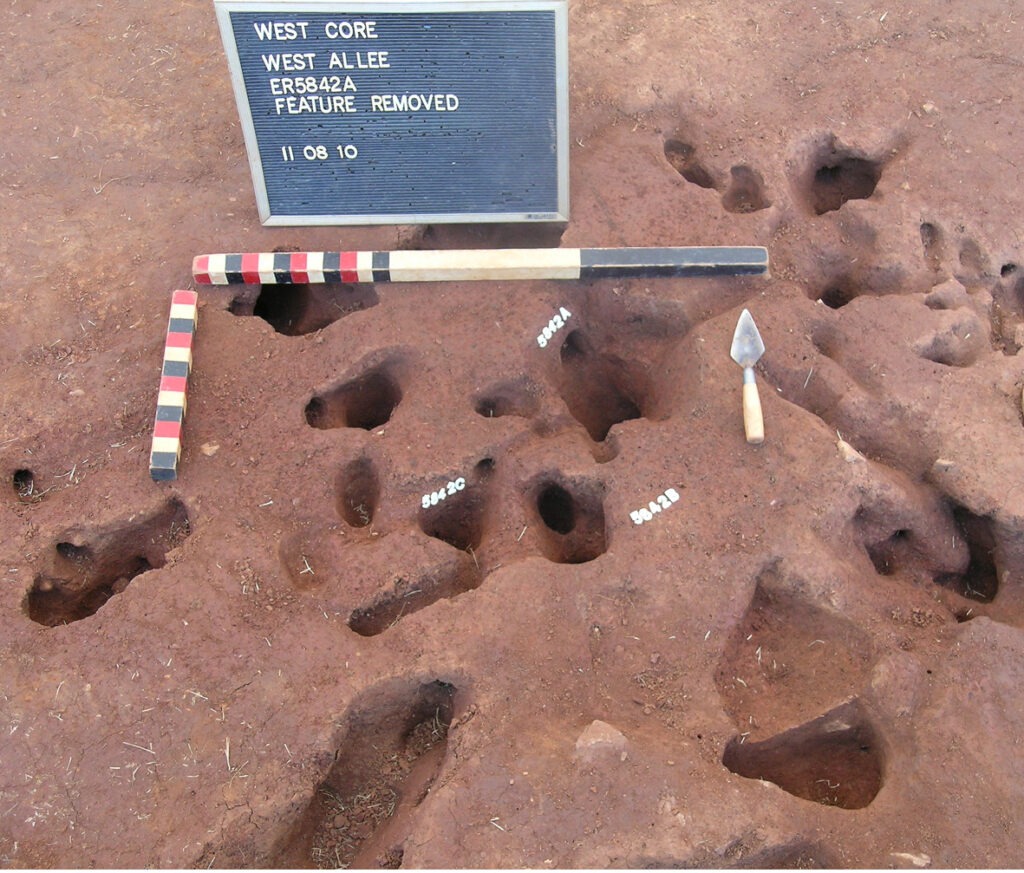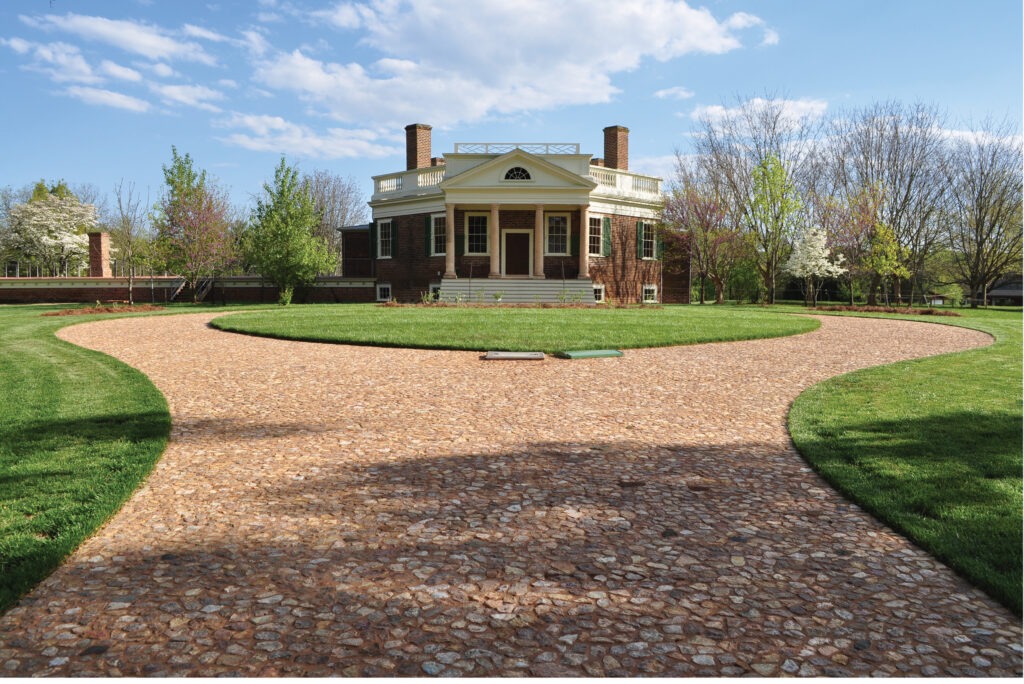Today, A+A is running the second installment of a two-part feature article I wrote for a recent issue of the Virginia Sportsman magazine. It documents the efforts of landscape architect Will Rieley and Eric Proebsting, Poplar Forest‘s director of archeology and landscapes, to restore Thomas Jefferson’s Palladian vision for his Bedford County, Virginia retreat. Part II also describes the role of 94 enslaved laborers, including children, in realizing Jefferson’s plans:
Three oval planting beds visible from the north entrance portico were also restored. One is directly in front; one is to the left, and another is to the right. The left and right beds are not symmetrical and lie at a different orientation, possibly to accommodate views from carriages wheeling in around the circular turnaround, Rieley surmises. “Or perhaps they were canted differently to avoid some now absent tree or other feature in the landscape,” he says.
These beds were planted with roses and other ornamentals. “The middle bed is the largest one, with standard roses, and to the right are miniature roses,” Rieley says. “To the left are bristly locusts—their bloom is similar to the color of the roses, but it’s not the same.”
For the carriage turnaround itself, the original Jefferson-era cobblestones were preserved carefully below a new restoration, and protected beneath cloth, gravel, concrete and mortar. Using photogrammetry, the archeologists preserved the original Jefferson-era surface, stone by stone.
Cobblestones for the new restoration surface came from a nearby sod farm and are the same kind and size as the originals. Flat stones in front of the north portico were originally a local stone quarried on site. All the original stone was delivered by enslaved laborers—there were as many as 94 enslaved people living on the plantation at once during Jefferson’s time there.
“Archeological research has revealed that the area in front of the retreat house was flattened by enslaved laborers,” Proebsting says. “They were also required to gather tens of thousands of stones from nearby agricultural fields to construct the cobblestone surface for the carriage turnaround.”
Enslaved African Americans living at Poplar Forest also were required by Jefferson and his overseers to clear fields, then grow, harvest and prepare crops for sale at market and for use on the plantation. Among their other tasks were tending to livestock and orchards, spinning and weaving cloth, working metal, creating gardens, building houses and outbuildings and mending fences. “Enslaved children were instructed to gather grass seed to sow over bare patches of earth that were exposed on the mounds and other places within the 10-acre ornamental grounds,” he says.
Recognizing the fruits of their labor, as well as the details of Jefferson’s landscape design, plays a significant role in the story of Poplar Forest’s restoration today—and in the future. In decades to come, their efforts to plant the banks of the sunken south lawn will be recreated. Then there’s the restoration of a circular drive around the entire villa—surrounded by another double row of paper mulberries. And in time, the willows and aspens atop and around the mounds will be replanted.
Without the efforts of enslaved laborers, Poplar Forest could not have been built. They provided the impetus to realize Jefferson’s vision of a unified landscape and architecture.
Rieley’s most recent landscape architecture project is a new entrance road that traverses the fields where those laborers once worked. It ends at a parking area looking up to the retreat they helped build.
It’s not a short drive, but it is one that leads to a landscape laden with multiple layers of design, meaning and history.
(Editor’s note: The work described here culminated in a special dedication ceremony on Oct. 14, 2021, during which the Garden Club of Virginia officially gifted these four landscape projects, restored under their auspices, to The Corporation for Poplar Forest.)
For more, go here.

